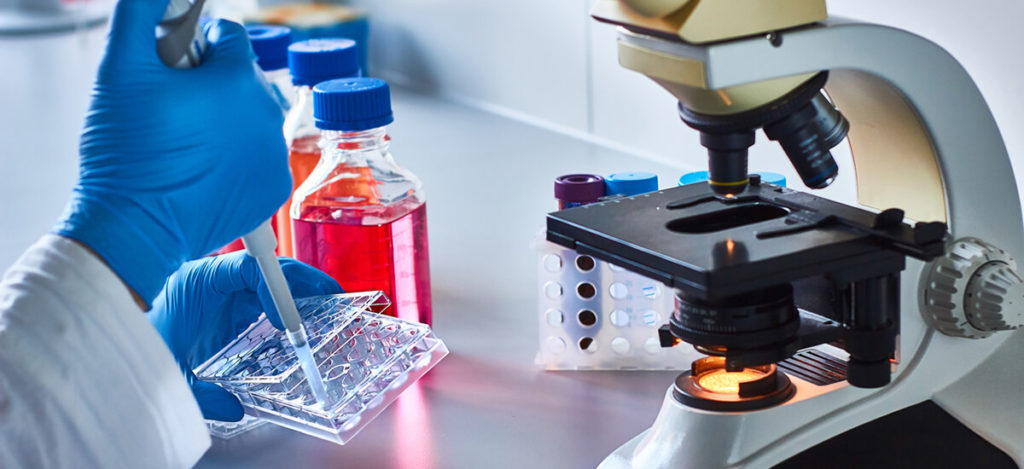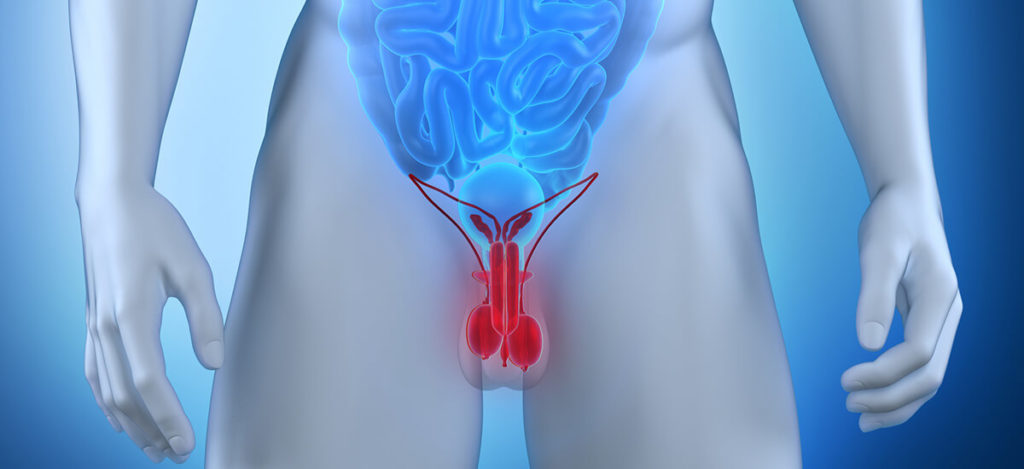Purpose
The are a variety of cancerous diseases of the blood and bone marrow that can be potentially cured by bone marrow transplantation (BMT). Diseases like leukemia, lymphoma, and multiple myeloma are among the conditions that can be treated with BMT.
Official Title
Non-myeloablative Allogeneic Peripheral Blood Mobilized Hematopoietic Precursor Cell Transplantation for Hematologic Malignancies in High Risk Patients and in Patients with Debilitating Hematologic Diseases
Conditions
– Hematologic Disease- Lymphoma- Multiple Myeloma- Myelodysplastic Syndrome- Myeloproliferative Disorder
Study Type
Interventional
Study Design
Treatment, Safety/Efficacy
Further Details
Some patients with these diseases can be treated with medical chemotherapy alone. However, patients who relapse following chemotherapy are usually not curable with additional chemotherapy treatments. The only option known to provide a potential cure if this occurs is BMT. Allogenic transplants are cells collected from relatives of the patient. The transplant requires additional high intensity chemotherapy and radiation in order to destroy cancerous cells. In the process, many normal bone marrow cells are also destroyed. This is the reason for transplanting stem cells. The stem cells help to build new functioning bone marrow, red cells, white cells, and platelets. In addition, the immune cells from the donor are implanted into the recipient’s body and help to fight off infection and kill remaining cancerous cells. Unfortunately, the powerful doses of chemotherapy and radiation therapy associated with allogenic BMT have toxic side effects and often make BMTs too dangerous to attempt in many patients. In order to reduce the complications of BMT, and make it a safer available option for patients with cancers of the blood and bone marrow, researchers have developed a new approach to the BMT. In this study researchers plan to use stem cells collected from the blood stream of patient’s relatives rather than from the bone marrow (blood progenitor/stem cell transplant). In addition, researchers plan to use low doses of chemotherapy and no radiation therapy to reduce side effects. The majority of the cancer killing effect will be the responsibility of the stem cell transplant rather than the chemotherapy. Patients with malignant and non-malignant hematologic diseases including severe aplastic anemia (SAA), paroxysmal nocturnal hemoglobinuria (PNH), myelodysplastic syndrome (MDS), acute and chronic leukemias, Hodgkin’s and non-Hodgkin’s lymphoma and multiple myeloma can now be cured by allogeneic bone marrow transplantation (BMT). This curative effect has been ascribed to the use of high dose chemo-radiotherapy and the anti-tumor or anti-bone marrow effect of the allograft. Dose intensification of conditioning regimens in attempts to reduce disease recurrence has been largely unsuccessful because of increased toxicity and mortality. Indeed, most evidence now points to donor-derived T-cells as being the principal modality leading to the complete eradication of both malignant and non-malignant host hematopoietic cells. The assumption that successful allogeneic BMT relies on the myeloblative effect of intensive but hazardous chemo-radiotherapy has largely restricted this therapeutic modality to patients with malignant or life-threatening hematologic disorders under the age of 55 years. Treatment-related mortality increases substantially with age, prior intensive treatment with chemo-radiotherapy, worsening performance status, and co-morbid medical conditions. An unacceptable risk of death from conventional BMT renders many patients ineligible for what may otherwise be curative therapy. Several in vitro studies have demonstrated the existence of donor-derived CD4 and CD8 positive lymphocytes with specific reactivity for the patient’s leukemia. These cells provide a potent graft-versus-leukemia (GVL) effect. This GVL effect is best seen in patients with CML relapsing after bone marrow transplantation, where a single infusion of donor lymphocytes has been shown to induce complete remission. In addition to the potent anti-leukemia effect of these cells, there is now strong evidence that donor T-cells are capable of completely eradicating residual host hematopoietic cells in a non-myeloablative transplant setting (graft-versus-marrow) leading to successful and complete donor hematopoietic engraftment. Non-myeloablative allogenic peripheral blood stem cell transplants are currently being investigated in phase I/II trials assessing engraftment efficacy and toxicity at a number of transplant centers. Preliminary data, including our own experience with greater than 150 patients undergoing this type of procedure, have shown a high rate of complete donor engraftment with a low toxicity profile. Two recent studies investigating non-myeloablative allo-transplantation in standard risk patients revealed an extremely low rate of transplant-related complications and mortality. The decreased risk of transplant-related complications associated with non-myeloablative transplants expands the eligibility of transplant candidates as well as opens the possibility to evaluate non-myeloablative regimens in patients at high risk for complications with standard transplantation. Besides hematologic malignancies, allogeneic BMT has been shown to be curative in a number of debilitating hematologic diseases which may behave in a relatively indolent fashion, such as PNH and refractory anemia (RA) or refractory anemia with ringed sideroblasts (RARS). However, the 30% risk of treatment-related mortality with standard myeloablative allotransplantation usually precludes these patients from potentially curative therapy, because of concerns about shortening life in patients with these disorders. In this protocol we investigate non-myeloablative allogeneic PBSC transplantation in two groups of patients where standard allogeneic transplantation is considered to have unacceptable toxicity. Group A: Patients with hematologic malignancies with factors putting them at high risk for transplant related complications and mortality, including prior intensive chemo-radiotherapy and co-morbid diseases. Group B: Patients with hematologic diseases (both clonal and non-clonal) associated with reasonable longevity not currently considered for allogeneic BMT because of prohibitive procedural mortality with conventional BMT. In this protocol, eligible patients are treated with an allogeneic peripheral blood stem cell transplant from an HLA identical or single HLA antigen-mismatched family donor, using an intensive immunosuppressive regimen without myeloablation (“mini-transplant”) in an attempt to decrease the transplant related toxicities while preserving the anti-malignancy and/or anti-host marrow effect of the graft. The low intensity non-myeloablative conditioning regimen should provide adequate immunosuppression to allow stem cell and lymphocyte engraftment. T-cell replete, donor-derived, granulocyte colony stimulating factor (G-CSF)-mobilized peripheral blood stem cells (PBSC) will be used to establish hematopoietic and lymphoid reconstitution. We will add back lymphocytes in patients with less than 100% donor T-cell chimerism in an attempt to prevent graft rejection and enhance a graft-versus-malignancy effect. The primary endpoint of this study is transplant related mortality (200 day survival). Other end points include engraftment, degree of donor-host chimerism, incidence of acute and chronic graft versus host disease (GVHD), transplant related morbidity as well as disease-free and overall survival.
Study Start
Eligibility & Criteria
Genders Eligible for Study: Both Criteria INCLUSION CRITERIA – Recipients:Group A: Patients at high risk for transplant related complications and mortality as defined below:Ages 10 to 55 with a history of one of the following:Treatment with dose intensive chemotherapy and/or radiotherapyPrevious history of allo/auto transplantHistory of multiple myeloma or extramedullary plasmacytomaChronic disease or co-morbid medical condition including patients with symptomsor signs of significant pulmonary disease, hepatic disease, kidney disease, cardiac disease or disease of other organ systems which would result in increased risk of morbidity or death from a standard myeloablative transplant.Diseases to be included:Chronic myelogenous leukemia (CML); chronic phaseAcute lymphoblastic leukemia (ALL), all patients in complete or partial remission.Acute myelogenous leukemia (AML): AML in first complete or partial remissionExceptions: AML with good risk karyotypes: AML M3 t(15:17), AML M4Eo (inv. 16), AML t(8;21). All AML in second or subsequent complete remission.Myelodysplastic syndromes: refractory anemia with excess blasts (RAEB), or chronic myelomonocyte leukemia (CMML).Myeloproliferative diseases associated with either cytopenia or uncontrolled proliferation.Chronic lymphocytic leukemia (CLL) or small lymphocytic lymphoma (SLL) with bulky or progressive disease despite prior treatment with chemotherapy which includes purine analogs.Non-Hodgkin’s Lymphoma (NHL)A) Intermediate or high grade relapsed or progressive despite treatment with standard therapy ineligible for autologous PBSC transplant.B) Non-Hodgkin’s intermediate or high grade relapsing despite prior autologous transplant.C) Low grade follicular or small lymphocytic lymphoma (1) high risk patients who have relapsed following conventional chemotherapy, (2) relapsed following autologous marrow or PBSC transplant, or (3) chemo resistant disease.Hodgkin’s disease, relapsed after prior autologous transplant or after 2 or more combination chemotherapy regimens and ineligible for autologous PBSC transplant.Group B: Patients with hematologic diseases associated with reasonable longevity, shown to be curable by allogeneic BMT but where concern for a high procedural mortality with conventional BMT may delay or prevent such treatment.Ages 10 to 80 with a history of one of the followingParoxysmal nocturnal hemoglobinuria (PNH) associated with either life-threatening thrombosis, cytopenia, transfusion dependence or recurrent and debilitating hemolytic crisis.Aplastic anemia or acquired pure red cell aplasia in patients associated with transfusion dependence and/or neutropenia who have failed immunosuppressive therapyRefractory anemia (RA) or RARS MDS patients who have failed treatment with ATG or cyclosporine and who have associated transfusion dependence and/or neutropenia.Ability to comprehend the investigational nature of the study and provide informed consent. The procedure will be explained to patients age 10-17 years with formal consent being obtained from parents or legal guardian.Availability of HLA identical or single HLA locus mismatched family donorINCLUSION CRITERIA – Donor:HLA identical or single HLA mismatched family donorAge greater than or equal to 2 up to 80 years oldWeight greater than or equal to 18 kgAbility of donor or guardian of donor to comprehend the investigational nature of the study and provide informed consent.EXCLUSION CRITERIA – Recipient – any of the following:Pregnant or lactatingAge less than 10 or greater than 80ECOG performance status of 3 or more. Psychiatric disorder or mental deficiency severe as to make compliance with the BMT treatment unlikely and making informed consent impossible.Major anticipated illness or organ failure incompatible with survival from PBSC transplantDiffusion capacity of carbon monoxide (DLCO) less than 40% predicted.Left ventricular ejection fraction: less than 30%.Serum creatinine greater than 2.5 mg/dl or creatinine clearance less than 50 cc/min by 24 hr urine collectionSerum bilirubin greater than 4 mg/dl, transaminases greater than 5x upper limit of normal,Other malignant diseases liable to relapse or progress within 5 years.EXCLUSION CRITERIA – Donor – any of the following:Pregnant or lactatingDonor unfit to receive G-CSF and undergo apheresis. (Uncontrolled hypertension, history of congestive heart failure or unstable angina, thrombocytopenia)HIV positive donor. Donors who are positive for hepatitis B (HBV), hepatitis C (HCV) or human T-cell lymphotropic virus (HTLV)-1 will be used at the discretion of the investigator following counseling and approval from the recipient
Total Enrolment
90
Contact Details
(Source: National Heart, Lung, and Blood Institute (NHLBI), March 2004)
All content and media on the HealthEngine Blog is created and published online for informational purposes only. It is not intended to be a substitute for professional medical advice and should not be relied on as health or personal advice. Always seek the guidance of your doctor or other qualified health professional with any questions you may have regarding your health or a medical condition. Never disregard the advice of a medical professional, or delay in seeking it because of something you have read on this Website. If you think you may have a medical emergency, call your doctor, go to the nearest hospital emergency department, or call the emergency services immediately.







